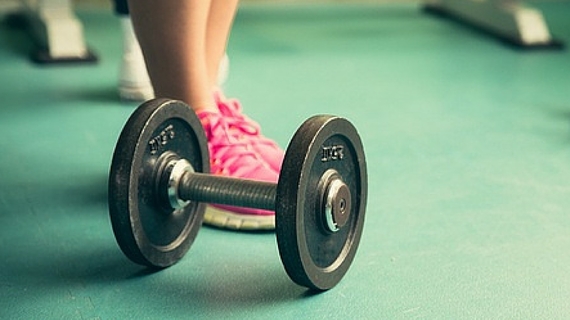Have you been at the gym and wondered how you're going to make it through the next set, but surprised yourself by doing it, and the naughty extra one the trainer thinks is fun? Business coach Aerlie Wildy outlines the similar structures of a training session and an entrepreneur's most productive day.
Structure Your Day as a Workout
It's no secret that the structure of a high intensity workout are a successful training strategy to improve fitness, burn calories and build muscle. They feature short bursts of high intensity activity, combined with short rests -- designed to allow you to recover, but not drop your heart rate too much.
Here's a breakdown of a typical 30-60 minute workout:
- Welcome + Warm up
- #1 High Intensity Activity + Active Recovery
- #2 High Intensity Activity + Active Recovery
- #3 High Intensity Activity
- Longer rest
- Gradual Intensity building activity
- #1 High Intensity Activity + Active Recovery
- #2 High Intensity Activity + Active Recovery
- #3 High Intensity Activity
- Warm down & Stretch
The structure of this work out is designed to push your body harder, for shorter cycles. It burns more calories because you work hard in the short bursts, and then allow your body to recover.
Even training to run 5ks involves short spurts of energy, with shorter rests in between -- and as the fitness level increases, the amount of time running increases -- and within weeks most people can run for longer, and have improved their fitness.
If someone hasn't set up the foundation of fitness, and started to run 5k, they'd probably be gasping for air by the 2km mark, and have to walk the rest of the way -- meaning it will take a lot longer.
So what happens if you apply this training to the way you work?
Well, it just so happens to be a perfect fit!
Structuring your day to be a workout, and scheduling in periods of high intensity focus -- without distraction -- and short breaks to recharge your energy will actually allow you to be much more productive than a working day that pushed through, without breaks.
Avoiding the Afternoon Slump
We've all been there, and there's a name for it: the afternoon slump!
It happens when you've worked hard all morning, and probably haven't stopped much for lunch, or if you have, you've worked while eating, and your just hitting that 2-3 p.m. mark (or if you're running, the 2-3km mark), and running out of steam.
You can't concentrate, you are easily distracted, you're multi-tasking -- very ineffectively, and for the next two hours your work rate will be at a walking pace, but you push through, and get to the end of the day absolutely brain dead.
Well, here's where we can really learn about productivity from your personal trainer. If you re-structure your day to include active rests (screen free time), short bursts of focus, and a break in the middle for some variety and to allow your brain to re-charge again -- you will have your most productive day ever!
Here's a guideline for how you could structure your day to improve your "working fitness."
- In office, Set up & prepare for work
- #1 Focus Session (25 mins) + Screen Free Break (5 mins)
- #2 Focus Session (25 mins) + Screen Free Break (5 mins)
- #3 Focus Session (25 mins)
- Lunch
- Admin/ operational/ social tasks
- #1 #1 Focus Session (25 mins) + Screen Free Break (5 mins)
- #2 #1 Focus Session (25 mins) + Screen Free Break (5 mins)
- #3 #1 Focus Session (25 mins)
- Tidy up, prepare for tomorrow
This kind of "work" out is designed to help you be highly productive during the Focus Sessions. It's a popular strategy -- there are even apps that help you do it (The Pomodoro Technique). The theory behind the shorter bursts is that it is much easier to be motivated to work for 25 minutes that it is for 6 hours. Often, we procrastinate because projects seem too big, and we don't know where to start, so the shorter work schedule feels less overwhelming.
I set my phone for 25 minutes at a time, but you can download apps for your computer or phone that can also block you from distracting sites too!
The Screen Free Breaks are important -- and just like in a fitness session, play a vital role. They allow you to recharge. They also allow you to get up and move your body. Sitting for hours on end without moving leaves me feeling ache-y and tired, and I'm sure I'm not alone in that! It's good for your eyes, your muscles and your brain -- just like exercising!
So give it a try! Plan out your day with smaller sessions of focus work. Just plan to work on one project/task at a time (a huge productivity booster!) and see if your energy levels are better at the end of the day, and if you manage to jog past the afternoon slump, because you've just had a break and still have energy to get through to the end of the day -- wave as you go past!
It's a much more sustainable way of working!
#nomoreburnout
Aerlie Wildy runs On Fire: a 90 day Planning, Productivity and Accountability Program.
